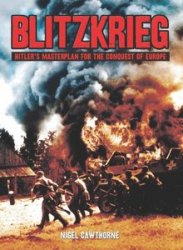While many of the analyses described as middle range research seem quite straightforward, few concepts in archaeology have proved as slippery as the notion of ‘the middle range’. Middle range theory was initially coined by Robert Merton in sociology to moderate an opposition he saw between highly abstract theoretical debates and empirically focused studies. Middle range theories were proposed as a way of balancing this opposition. They would allow sociologists to move beyond atheoretical empirical studies and build mid-level constructs that could promote further empirical testing while simultaneously speaking to broader theoretical issues. In the late 1970s, the term was introduced into archaeology by Louis Binford and quickly became one of the most important concepts, in processual archaeology’s scientific approach to knowing the past. Binford suggested that middle range research could address a fundamental problem in archaeology. Archaeologists generally drew on anthropological theory of social systems to interpret the material record; yet these theories explained human behavior rather than the material culture patterns that are the focus of archaeological analysis. In order to carry out deductive testing strategies championed by processual archaeology, explicit and unambiguous linkages needed to be identified between human behavior and material culture. Binford thus enlisted ethno-archaeology to generate this essential component of processual archaeology’s epistemology, charging it with building a body of ‘middle range theory’ that identified material correlates for the human behaviors referred to in its explanatory models.
While much has been made of the distinction between Binford’s and Merton’s versions of middle range theory, they do share the view that middle range theories are primarily developed through inductive empirical studies. Merton was certainly cognizant of the ways that general theoretical tendencies impacted the definition of the lower-level ‘concepts’ in data collection, but he saw middle range theory primarily as an outgrowth of empirical research. Because middle range theories were to be abstracted directly from data, the resulting theory could be used by a number of conflicting general theories or might even be combined into an entirely new theoretical entity. Binford shared this view, although he seems to have come about it independently. While ethnoarchaeology must be inspired by archaeology’s interest in ‘functional relations’, middle range theory was to be developed primarily out of inductive programs of ‘theory-building.’ He felt this was possible because in ethnoarchaeologi-cal research there is ‘‘little problem of inference regarding the identity of the agent producing the pattern or traces. . .’’. What is quite distinct about Binford’s version of middle range theory is how restricted its application is compared to sociological uses. Rather than as an alternative to general theorizing, he employed the concept specifically to solve the archaeological problem of translating a static material record into human behavior.
This limited, inductive basis for middle range theory had an unexpected but important spin-off. As positivism slowly waned in the social sciences, middle range theory became a lynch pin in processual archaeology’s response to the contextualist challenge offered by Thomas Kuhn. Binford brilliantly noted that, in contrast to relativist responses to paradigmatic knowledge, conceptually unrelated bodies of theory could be combined to create a mitigated or methodological form of objectivity. When data or theoretical propositions developed under one body of theory are used in a test of an unrelated theory, the test is ‘independent’ because different background knowledge (from that being tested) is used to constitute the data as evidence. Middle range theories were uniquely positioned to generate conceptual independence because they were ‘built’ from eth-noarchaeology’s inductive programs of research and thus seemingly did not rely on archaeology’s general theory. By introducing middle range theory into archaeological testing as an independently generated ‘linkage’ between explanatory theories and the archaeological record, processual archaeology felt it could avoid the tautologies implied by paradigmatic knowledge. Ethno-archaeology’s middle range theories thus worked much like the data created by technical specialties such as C14 dating, lithic use-wear analysis or stratigraphy. These analyses draw on background knowledge from other (nonarchaeological) sciences, which meant that when their findings (a date, a pattern of microwear, or a stratigraphic layer) were introduced into archaeological interpretations, they created opportunities for noncircular assessments of that interpretation.
The concept of the ‘middle range’ emerging from processual archaeology thus possessed two related meanings. First, it referred to the study of the causal processes that create the archaeological record, echoing behavioral archaeology’s interest in ‘Formation Processes.’ Second, it also referred to distinct bodies of theory that were conceptually independent of archaeology’s general explanatory theory. By using these ‘middle range’ theories in archaeological testing programs, the field could seemingly escape relativism.




 World History
World History









